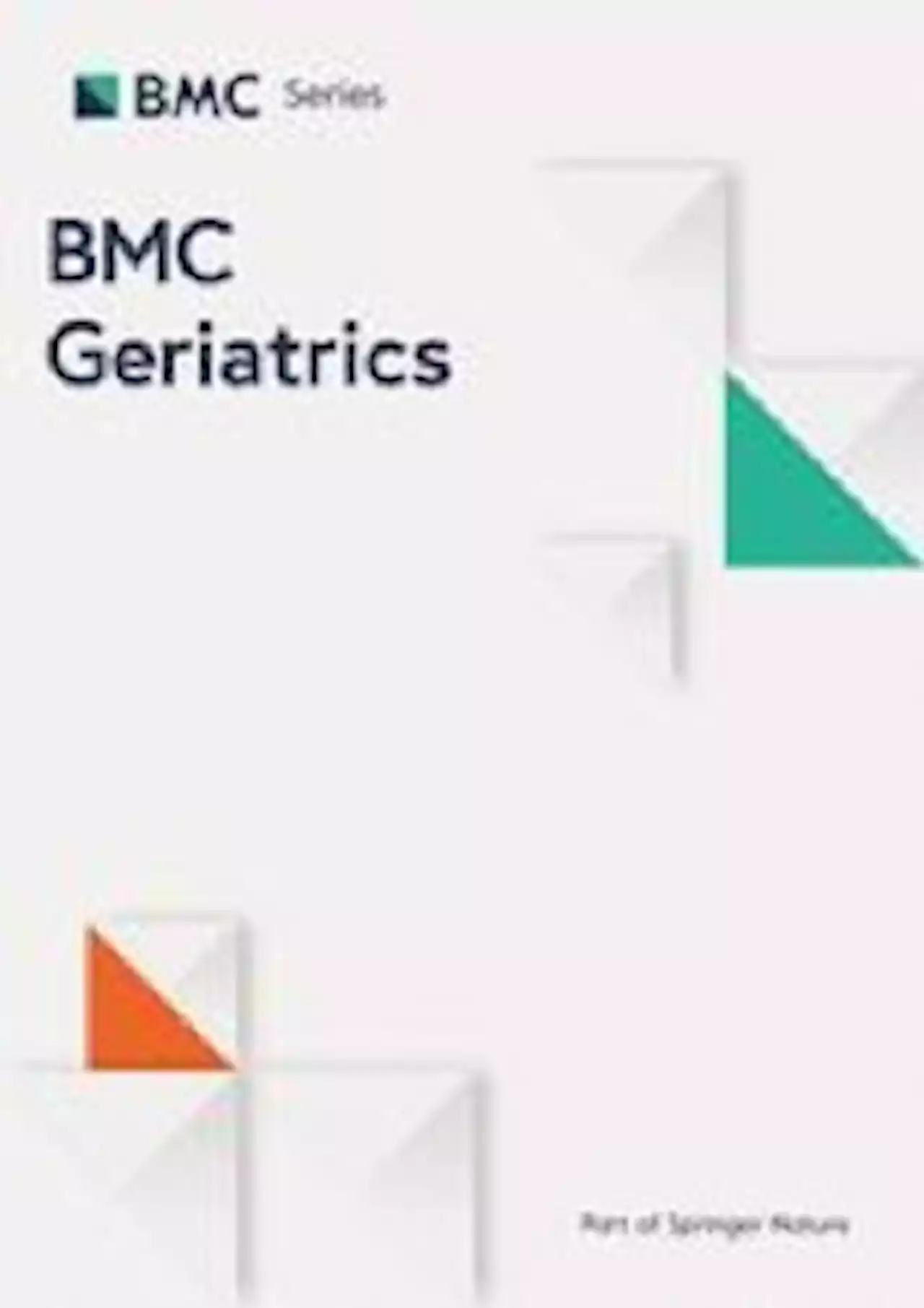Vitamin D insufficiency in metabolic syndrome patients is associated with increased inflammation and serum adipokine abnormalities which may be associated with developing metabolic complications – according to a study published in BMCEndocrDisord.
]. Cases were recruited from among those referred to health centers affiliated with Zabol University of Medical Sciences. Every health center offers primary health care for families within its coverage or reach. Serum adiponectin levels as a key variable were obtained from Rambhojan et al. study [], was used to estimate the sample size. Considering the study power of 80%, a type I error of 5%, and the ratio of controls to cases as 2, we required 65 cases and 130 controls for this study.
Controls were patients with MetS and serum 25D ≥ 30 ng/ml and were selected from subjects visiting the same health centers. Control subjects were matched with cases regarding sex, age , and BMI . The exclusion criteria for controls included the presence of any inflammatory disease, cardiovascular diseases, cancer, liver diseases, thyroid disorders, and kidney dysfunctions, being pregnant or lactating, and adherence to special diets.
The visceral fat level and body fat mass percentage was measured by the bioelectrical impedance analysis system . To increase accuracy, the subjects were asked to prevent from intense or moderate exercises 1–2 h before the use of BIA and to urinate prior to tests. The same trained technician performed all measurements to reduce subjective error.
Belgique Dernières Nouvelles, Belgique Actualités
Similar News:Vous pouvez également lire des articles d'actualité similaires à celui-ci que nous avons collectés auprès d'autres sources d'information.
 Cardiovascular disease risk and all-cause mortality associated with accelerometer-measured physical activity and sedentary time ‒ a prospective population-based study in older adults - BMC GeriatricsBackground Low levels of physical activity (PA) and high sedentary time (ST) are common in older adults and lack of PA is a risk factor for cardiovascular disease (CVD). Knowledge about associations with accelerometer-measured PA, ST and CVD risk in older adults is insufficient. This study examines the associations of accelerometer-measured PA and ST with cardiovascular risk measured using the Framingham risk score (FRS) and all-cause mortality in older adults. Methods A population-based sample of 660 (277 men, 383 women) older people (mean age 68.9) participated in the Oulu45 cohort study from 2013‒2015. PA and ST were measured with wrist-worn accelerometers at baseline for two weeks. Ten-year CVD risk (%) was estimated with FRS. The data for all-cause mortality were identified from the Digital and Population Data Services Agency, Finland after an average of 6.2 years follow-up. The associations between moderate to vigorous physical activity (MVPA), light physical activity (LPA), ST and FRS were analyzed using the multivariable linear regression analysis. Associations between LPA, ST and mortality were analyzed using the Cox proportional-hazard regression models. Results Each 10 min increase in MVPA (β = -0.779, 95% CI -1.186 to -0.371, p | 0.001) and LPA (β = -0.293, 95% CI -0.448 to -0.138, p | 0.001) was negatively associated with FRS while a 10 min increase in ST (β = 0.290, 95% CI 0.158 to 0.421, p | 0.001) was positively associated with FRS. After adjustment for waist circumference, only ST was significantly associated with FRS. Each 10 min increase in LPA was associated with 6.5% lower all-cause mortality risk (HR = 0.935, 95% CI 0.884 to 0.990, p = 0.020) and each 10 min increase in ST with 5.6% increased mortality risk (HR = 1.056, 95% CI 1.007 to 1.108, p = 0.025). Conclusion A higher amount of daily physical activity, at any intensity level, and avoidance of sedentary time are associated with reduced cardiovascular disease risk in older people. Higher ti
Cardiovascular disease risk and all-cause mortality associated with accelerometer-measured physical activity and sedentary time ‒ a prospective population-based study in older adults - BMC GeriatricsBackground Low levels of physical activity (PA) and high sedentary time (ST) are common in older adults and lack of PA is a risk factor for cardiovascular disease (CVD). Knowledge about associations with accelerometer-measured PA, ST and CVD risk in older adults is insufficient. This study examines the associations of accelerometer-measured PA and ST with cardiovascular risk measured using the Framingham risk score (FRS) and all-cause mortality in older adults. Methods A population-based sample of 660 (277 men, 383 women) older people (mean age 68.9) participated in the Oulu45 cohort study from 2013‒2015. PA and ST were measured with wrist-worn accelerometers at baseline for two weeks. Ten-year CVD risk (%) was estimated with FRS. The data for all-cause mortality were identified from the Digital and Population Data Services Agency, Finland after an average of 6.2 years follow-up. The associations between moderate to vigorous physical activity (MVPA), light physical activity (LPA), ST and FRS were analyzed using the multivariable linear regression analysis. Associations between LPA, ST and mortality were analyzed using the Cox proportional-hazard regression models. Results Each 10 min increase in MVPA (β = -0.779, 95% CI -1.186 to -0.371, p | 0.001) and LPA (β = -0.293, 95% CI -0.448 to -0.138, p | 0.001) was negatively associated with FRS while a 10 min increase in ST (β = 0.290, 95% CI 0.158 to 0.421, p | 0.001) was positively associated with FRS. After adjustment for waist circumference, only ST was significantly associated with FRS. Each 10 min increase in LPA was associated with 6.5% lower all-cause mortality risk (HR = 0.935, 95% CI 0.884 to 0.990, p = 0.020) and each 10 min increase in ST with 5.6% increased mortality risk (HR = 1.056, 95% CI 1.007 to 1.108, p = 0.025). Conclusion A higher amount of daily physical activity, at any intensity level, and avoidance of sedentary time are associated with reduced cardiovascular disease risk in older people. Higher ti
Lire la suite »
 Mental health unit may close, for better at-home treatmentMental health unit to close, for better at-home treatment
Mental health unit may close, for better at-home treatmentMental health unit to close, for better at-home treatment
Lire la suite »
 How effective is vitamin D supplementation in COVID-19?The current paper addresses the considerable evidence now supporting the efficacy of vitamin D in COVID-19, as well as its safety.
How effective is vitamin D supplementation in COVID-19?The current paper addresses the considerable evidence now supporting the efficacy of vitamin D in COVID-19, as well as its safety.
Lire la suite »
 Dr Lisa Dinley brings experience to Nottingham-based aesthetic clinicWhen it comes to cosmetic treatments, it is not 'one size fits all', so Lisa ensures that all her patients receive a treatment plan bespoke to them. ad
Dr Lisa Dinley brings experience to Nottingham-based aesthetic clinicWhen it comes to cosmetic treatments, it is not 'one size fits all', so Lisa ensures that all her patients receive a treatment plan bespoke to them. ad
Lire la suite »
 Small molecule inhibitor found to be effective against SARS-CoV-2 variantsIn a new study, researchers developed RK-33, a small molecule inhibitor of DDX3, and evaluated its efficacy against severe acute respiratory syndrome coronavirus 2 (SARS-CoV-2) variants of concern (VOCs).
Small molecule inhibitor found to be effective against SARS-CoV-2 variantsIn a new study, researchers developed RK-33, a small molecule inhibitor of DDX3, and evaluated its efficacy against severe acute respiratory syndrome coronavirus 2 (SARS-CoV-2) variants of concern (VOCs).
Lire la suite »
 What is the impact of COVID-19 treatments targeting intracellular Neu1?In a new study, researchers assessed the impact of targeting intracellular Neu1 on severe acute respiratory syndrome coronavirus 2 (SARS-CoV-2) infection.
What is the impact of COVID-19 treatments targeting intracellular Neu1?In a new study, researchers assessed the impact of targeting intracellular Neu1 on severe acute respiratory syndrome coronavirus 2 (SARS-CoV-2) infection.
Lire la suite »
